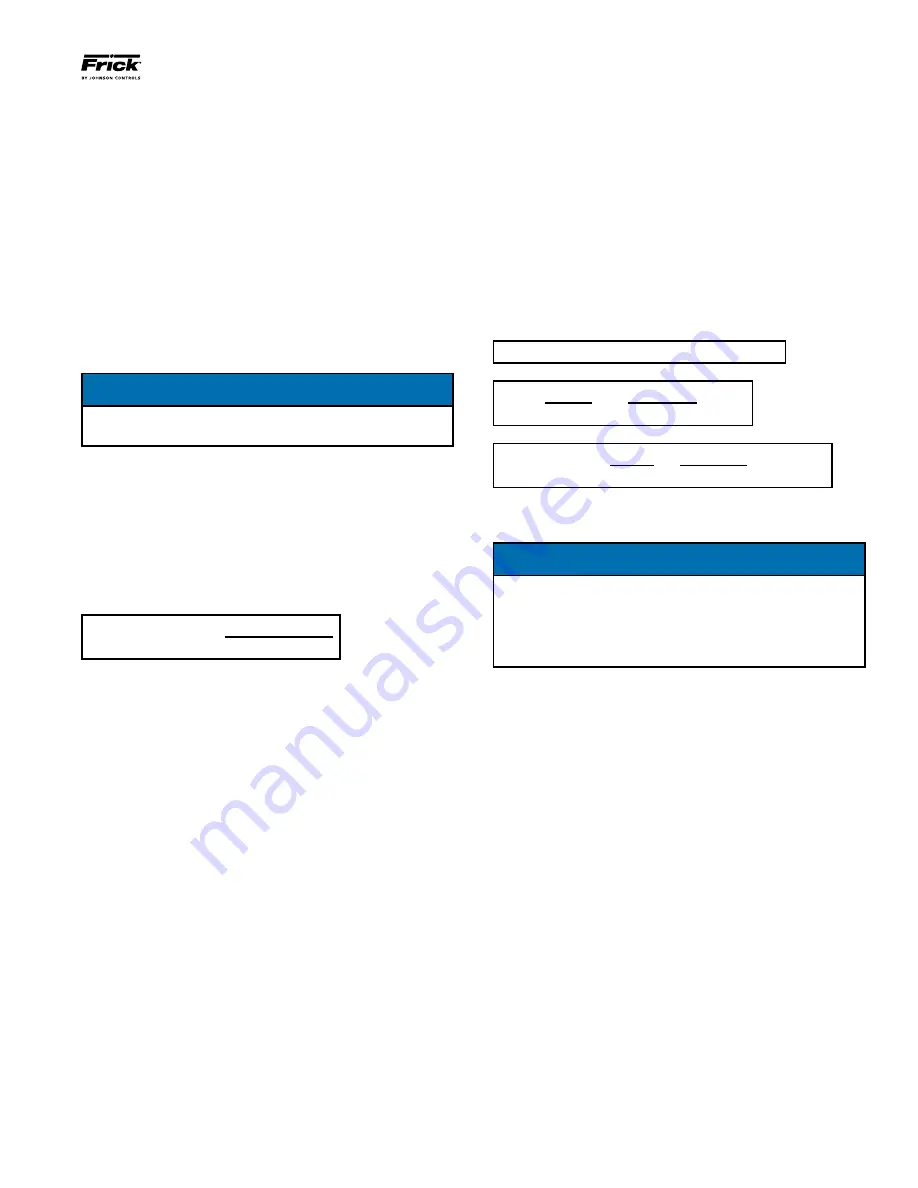
ECH EVAPORATIVE CONDENSERS
MAINTENANCE
140.910-IOM (DEC 13)
Page 19
•
In order to optimize heat transfer efficiency and maximize
equipment life “bleed” or “blowdown” a small amount
of recirculating water from the system. This controls the
cycles of concentration to maintain the quality of the
recirculating water within the guidelines given in Table
2, under Corrosion and Scale Control in the OPERATION
section.
•
Replenish the “bleed” water with fresh makeup water,
thereby limiting the buildup of impurities.
•
Bleed/Blowdown:
1. Accomplish the bleed automatically through a
solenoid valve controlled by a conductivity meter. The
conductivity meter set point is the water conductivity
at the desired cycles of concentration and should be
determined by a competent water treatment expert.
NOTICE
The solenoid valve and conductivity meter must be
supplied by others.
2. Alternatively, use a bleed line with a valve to continuously
bleed from the system. In this arrangement, adjust the
rate of bleed using the valve in the bleed line. Measure
the rate of bleed by filling a container of known volume
while noting the duration. Check the bleed rate and
water quality periodically to ensure that adequate
control of the water quality is being maintained.
Bleed Line Calculations:
Bleed rate is determined by the fol-
lowing formula:
Bleed Rate = B =
E
(n-1)
Where:
B = Bleed Rate (GPM)
E* = Evaporation Rate (GPM) = Q (GPM) x R (°F) x .001
Q = Process Fluid Flow Rate (GPM)
R = Range
n = Number of Cycles of Concentration = CR/CM
CR = Concentration in Recirculating Water
CM = Concentration in Makeup Water
* The evaporation rate “E” can be determined by any one of
the following methods:
1. The evaporation rate is approximately 2 GPM per 1 million
BTUH of heat rejection.
2. The evaporation rate is approximately 3 GPM per 100 tons
of refrigeration.
3. Evaporation Rate = Q (GPM) x R x .001 (as shown in the
example).
The following example illustrates a bleed rate calculation:
Given:
•
Condenser
•
Process Fluid Flow Rate = 800 GPM
•
Maximum Allowable Chloride Concentration = 250 ppm
•
Concentration of Chlorides in Makeup Water = 45 ppm
•
Range = 10°F
Find:
Bleed Rate
Solution:
So in this case,
E = Q x R x 0.001 = 800 x 10 x 0.001 = 8 GPM
n =
CR
=
250 ppm
= 5.55
CM
45 ppm
Bleed Rate = B =
E
=
8 GPM
= 1.75 GPM
(n-1)
(5.55-1)
Therefore, in this case we must bleed approximately 1.75 GPM
to limit the concentration of impurities.
NOTICE
This example focuses on a single parameter (chloride
concentration) of water only. The bleed rate required for a
system (when evaluating more than one parameter) is the
highest bleed rate required to keep all parameters within
recommended limits.






































